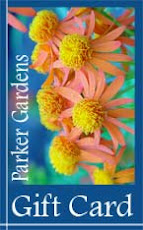

Houseplants aren’t just for houses anymore! All around town we see them in schools, offices, stores, libraries, restaurants, and health clubs. Now that the temperatures outside are changing and the days are getting shorter, we are spending more time inside. What a perfect time to stock up on your houseplants to keep that green thumb thriving all fall and winter long!
What exactly are these things we call houseplants? For the most part, they fall under two categories:
- Houseplants are generally tropical plants – native to the tropical and subtropical areas of the world
- Houseplants are also decorative plants that can be sustained year-round in an indoor environment
Houseplants bring our living and working spaces to life by providing interest, color, and texture. They can create serenity with delicate leaves and enchanting, soothing colors. On the contrary, houseplants can also create excitement with their strong leaf patterns and veining, coarse textures, and bold tropical colors.
Houseplants also have health benefits. They filter toxins from the air (Benzene, Trichloroethylene, and Formaldehyde). Plants take in CO2 and replenish the air we breathe with oxygen. They can create an aesthetically pleasing environment that helps to boost our moods and relieve stress.
Lighting is the number one limiting factor for the plants that we are able to grow successfully in our own spaces.
Most offices and homes can sustain plants that are considered “low light." These are plants that can not only survive, but thrive in artificial office lighting, northern windows, locations that are several feet away from an east or west window, or plants positioned far back from a southern exposure.
Some offices and most homes will have a few areas that will sustain “medium light” plants. This would include direct exposure to an eastern or western facing window, or filtered light from a southern exposure.
A few lucky indoor gardeners will have a greenhouse, sunroom, or a bright, southern exposure. This is the area with the brightest possible natural light in an indoor environment.
If you place your plant in lighting that is not suitable for its growth, it will let you know. Low light is indicated by yellowing, dropping leaves and buds as well as spindly, open growth. Light that is too bright will cause washed out/bleached color on the leaves or darkened sunburn spots.
Most plants will thrive between daytime temperatures of 60 to 75 degrees. Be careful of microclimates near windowpanes, heaters, and air conditioners. If you place your houseplants outside during the spring and summer (which is very good for the plant) wait until the nighttime temperatures are consistently in the high 50’s and pick areas that are protected from hot afternoon sun. Full sun indoors is much weaker than full sun outdoors.
Tropical plants require high humidity levels. When humidity levels are low (from home heaters and air conditioners), foliage becomes dry, turning brown, and buds can drop. Think of a plant’s humidity requirements as similar to the moisture requirements of our skin. When conditions are not ideal, our skin becomes dry. Just as we must apply skin lotion, plants need to have humidity provided via humidity trays, humidifiers, pebble trays with a small amount of water; misting, even grouping plants together can create more humidity.
Water requirements vary with the seasons. Plants experience their active growth in spring and summer, while their dormant periods are in the fall and winter. Allow the soil to slightly dry and then soak the roots thoroughly. It is better to err on the dry side than wet. In winter it is not uncommon to water once or twice per month, and in summer to water multiple times during a week. Always provide proper drainage to remove any water that is not absorbed. If plants sit in water, their roots are deprived of oxygen and will begin to rot.
As with watering, fertilizer requirements vary with growth activity. Actively growing houseplants can be watered on a weekly basis with a weak fertilizer solution or every two weeks with a standard solution. During the fall and winter months when growth is slow, it is usually sufficient to fertilize about every six weeks. Regardless of your schedule, it is important that you flush out the potting soil in between applications to remove any unused fertilizer salts that may have accumulated.
Remember to repot your houseplants. The potting soil that you use will decompose over time. You should repot with fresh soil about every two years – preferably in the beginning of spring. As our plants grow, they will begin to become too large for their pots. When repotting, choose a new pot that is 2” to 4” larger in diameter than the old pot. If the pot is too large, the potting soil will remain wet for extensive periods of time, causing the roots to rot. The pot that you use must have a drainage hole to allow excess water to escape. Pots without drainage holes are meant to be pot covers. You place your potted plant inside of the pot cover to add a decorative flair. When using a pot cover you must always pour out any excess water from the bottom.
Matching the plants you buy to your environment is crucial to your success. With the proper lighting and care, houseplants will give you enjoyment for many years.
For more information or answers to your questions, feel free to contact me at tracy@parkerplants.com.







